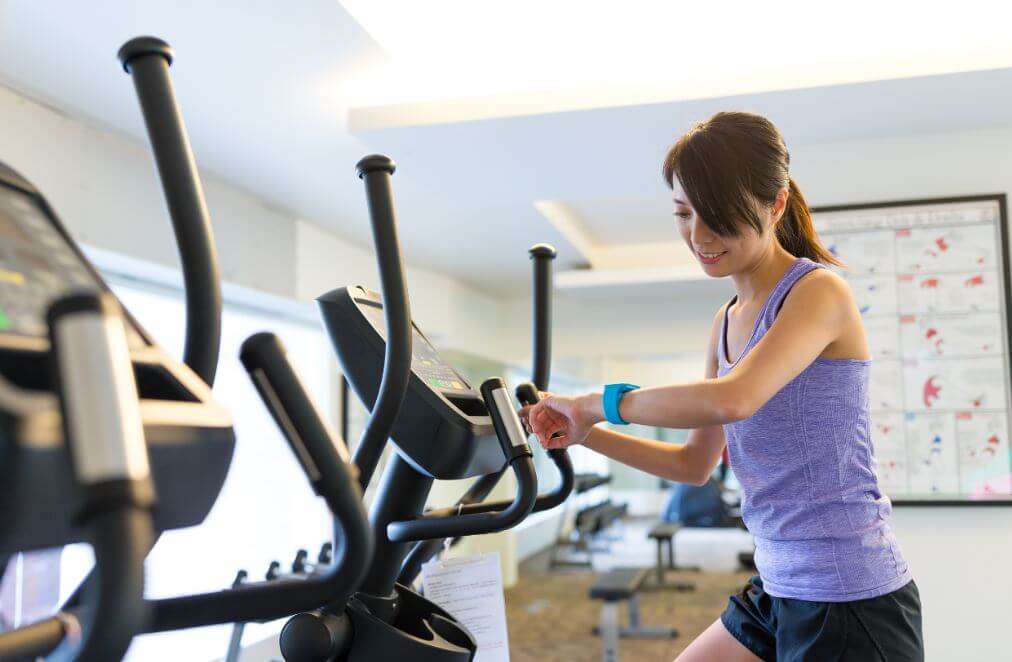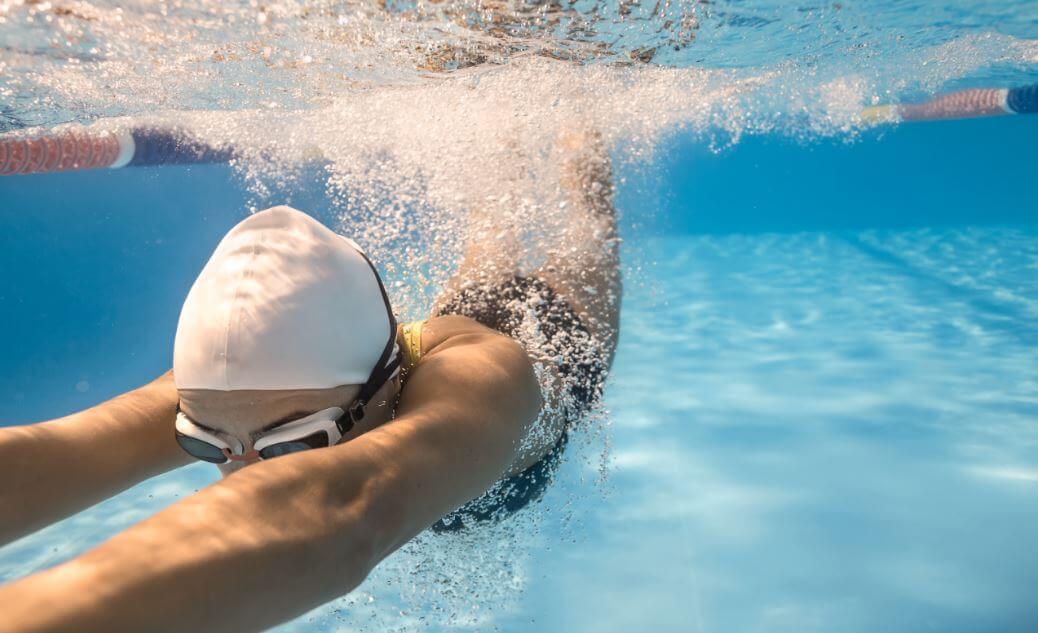3 Workouts you Should Do if you Have Diabetes

Physical activity is key for keeping both the body and mind in prime condition. High-stress situations that plague everyday life can lead to health problems. You should take even more precautions if you have diabetes.
Physical exercise can be extremely beneficial because it offers a higher quality of life. Some exercises burn the calories and regulate blood sugar and cholesterol levels in the bloodstream.
As a result, exercise offers benefits for those who suffer from cardiovascular diseases, excessive weight or diabetes. Physical activity also helps strengthen bones and muscles, heart and blood circulation.
Diabetes and the best exercises for diabetics
Some of the most recommended exercises include:
1. Low-impact cardiovascular exercises
Walking is a simple everyday activity that can take you through the park or even to your workplace. Stay consistent and aim for a minimum of 30 minutes. Maintain your walking speed to regulate your blood’s glucose levels.

Another great cardiovascular exercise is jumping rope. Jumping rope is simple, fast and fun. Try short 5-minute-max high impact sets to reduce blood sugar levels; the results will be equivalent to a half-hour walk.
2. Interval aerobics for diabetes
Follow a high-impact workout for a short period of time, a maximum of 10 minutes. Use the programs on treadmills or elliptical machines.
Remember to start off with a 5-minute warm-up. After, raise the intensity for 2 minutes and take 30-second breaks.

3. Swimming
Swimming is a well-rounded sport that offers plenty of health benefits. Doing freestyle for thirty minutes three to four times a week can help you control your glucose levels. That’s a huge responsibility for any diabetic.

Recommendations for coping with diabetes
When the body works out, it generates more glucose to create the fuel that muscles need to move. But this process can be problematic for people who suffer from hyper or hypoglycemia.
In light of that, those people need to keep the right blood sugar balance to prevent low levels. Following a proper diet has to go hand-in-hand with exercise.
Taking preventative action to prevent glucose imbalances is crucial. You should see your doctor before starting an exercise routine. Your doctor will help you take the right measures and actions for your particular situation.
You should also avoid high-impact exercise if this problem is relevant to you. These workouts demand high levels of energy, meaning that they can throw off the body’s glucose balance; this can be extremely dangerous for diabetic patients.
Additionally, you should monitor your glucose levels throughout your entire workout. You can even adjust your insulin levels as long as your doctor recommends it. While these measures might seem extreme, they’re absolutely necessary for people with diabetes.
Diet and diabetes: a vital aspect
Diet is always key for exercise. Planning a balanced diet that’s been approved by a nutritionist is essential. Diabetics should eat a snack and always stay hydrated before and after workouts.

Supervision
When you work out at a gym, it’s imperative that you explain your health conditions to your trainers. Informing them about your diabetes will help them choose the best exercises to keep your body healthy. You should also carry your medication with you in case of any emergencies.
The body sends signals when it notes a lack or excess of blood sugar in the bloodstream. If you have hyperglycemia, watch out for the following symptoms: intense thirst and urge to urinate, blurry vision and increased physical fatigue.
On the other hand, if you have hypoglycemia, the symptoms are as follows: increased sweating, feeling weak, dizziness, anxiety, mild headache, urge to eat and confusion.
Lastly, if you feel very fatigued or notice and symptoms of hypo or hyperglycemia, stop all physical activity immediately.
Physical activity is key for keeping both the body and mind in prime condition. High-stress situations that plague everyday life can lead to health problems. You should take even more precautions if you have diabetes.
Physical exercise can be extremely beneficial because it offers a higher quality of life. Some exercises burn the calories and regulate blood sugar and cholesterol levels in the bloodstream.
As a result, exercise offers benefits for those who suffer from cardiovascular diseases, excessive weight or diabetes. Physical activity also helps strengthen bones and muscles, heart and blood circulation.
Diabetes and the best exercises for diabetics
Some of the most recommended exercises include:
1. Low-impact cardiovascular exercises
Walking is a simple everyday activity that can take you through the park or even to your workplace. Stay consistent and aim for a minimum of 30 minutes. Maintain your walking speed to regulate your blood’s glucose levels.

Another great cardiovascular exercise is jumping rope. Jumping rope is simple, fast and fun. Try short 5-minute-max high impact sets to reduce blood sugar levels; the results will be equivalent to a half-hour walk.
2. Interval aerobics for diabetes
Follow a high-impact workout for a short period of time, a maximum of 10 minutes. Use the programs on treadmills or elliptical machines.
Remember to start off with a 5-minute warm-up. After, raise the intensity for 2 minutes and take 30-second breaks.

3. Swimming
Swimming is a well-rounded sport that offers plenty of health benefits. Doing freestyle for thirty minutes three to four times a week can help you control your glucose levels. That’s a huge responsibility for any diabetic.

Recommendations for coping with diabetes
When the body works out, it generates more glucose to create the fuel that muscles need to move. But this process can be problematic for people who suffer from hyper or hypoglycemia.
In light of that, those people need to keep the right blood sugar balance to prevent low levels. Following a proper diet has to go hand-in-hand with exercise.
Taking preventative action to prevent glucose imbalances is crucial. You should see your doctor before starting an exercise routine. Your doctor will help you take the right measures and actions for your particular situation.
You should also avoid high-impact exercise if this problem is relevant to you. These workouts demand high levels of energy, meaning that they can throw off the body’s glucose balance; this can be extremely dangerous for diabetic patients.
Additionally, you should monitor your glucose levels throughout your entire workout. You can even adjust your insulin levels as long as your doctor recommends it. While these measures might seem extreme, they’re absolutely necessary for people with diabetes.
Diet and diabetes: a vital aspect
Diet is always key for exercise. Planning a balanced diet that’s been approved by a nutritionist is essential. Diabetics should eat a snack and always stay hydrated before and after workouts.

Supervision
When you work out at a gym, it’s imperative that you explain your health conditions to your trainers. Informing them about your diabetes will help them choose the best exercises to keep your body healthy. You should also carry your medication with you in case of any emergencies.
The body sends signals when it notes a lack or excess of blood sugar in the bloodstream. If you have hyperglycemia, watch out for the following symptoms: intense thirst and urge to urinate, blurry vision and increased physical fatigue.
On the other hand, if you have hypoglycemia, the symptoms are as follows: increased sweating, feeling weak, dizziness, anxiety, mild headache, urge to eat and confusion.
Lastly, if you feel very fatigued or notice and symptoms of hypo or hyperglycemia, stop all physical activity immediately.
All cited sources were thoroughly reviewed by our team to ensure their quality, reliability, currency, and validity. The bibliography of this article was considered reliable and of academic or scientific accuracy.
- A. Novials. Diabetes y ejercicio. Sociedad Española de Diabetes. Extraído de: http://www.diabetesmadrid.org/wp-content/uploads/2015/07/Diabetes-y-Ejercicio-%C2%B7-SED.pdf
- Gabriel Cuatrecasas; Josep Franch; Ariadna Lloveras; Neus Piulats. 2013. Guía práctica de actividad física y diabetes. Extraído de: https://www.solucionesparaladiabetes.com/biblioteca/guias/GUIA_DIABETES_DEPORTE_Menarini-Diagnostics.pdf
This text is provided for informational purposes only and does not replace consultation with a professional. If in doubt, consult your specialist.








